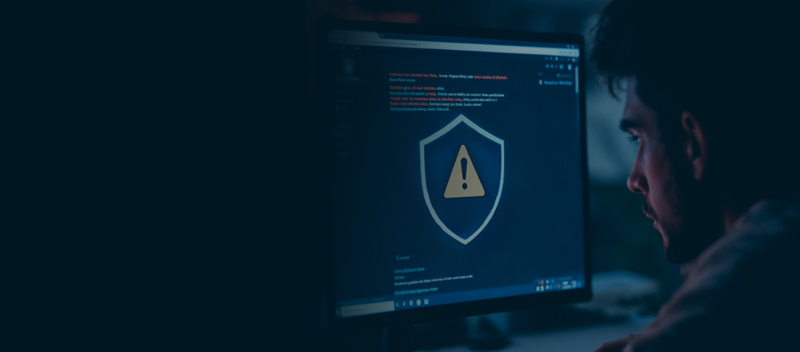Blog Tackling Advanced SOC 2 Compliance Issues
Tackling Advanced SOC 2 Compliance Issues

In today’s fast-evolving world of cybersecurity, SOC 2 compliance is no walk in the park. The more companies grow and adopt new technologies, the harder it becomes for their SOC 2 compliance issues. It is crucial for such challenging elements to be faced directly at all points in order to maintain the highest form of security and privacy protection possible.
Navigating Complex IT Environments
Maintaining SOC 2 compliance in a multi-cloud and hybrid environment is no small feat. With data and resources spread across various platforms, keeping everything secure can feel overwhelming.
Challenges
— Coverage of Cloud Assets: Ensuring complete visibility into your entire cloud estate is crucial for compliance. Many agent-based solutions only cover about 50% of cloud assets, leaving significant blind spots that can pose security risks and compliance gaps.
— Multi-Cloud Policy Management: Managing policies across multiple cloud providers can be a nightmare. Native security features are often platform-specific, leading to duplicative work and potential discrepancies when trying to align policies manually.
— Risk Prioritization: With the constant flood of alerts, it’s easy for teams to get overwhelmed. Many compliance solutions identify issues but fail to prioritize them, leading to alert fatigue and inefficiencies. Critical issues may be delayed while teams focus on less important tasks.
— Customization: Different organizations have unique compliance needs, but many solutions offer standard frameworks that can’t be tailored to specific use cases. This lack of customization can hinder effective compliance reporting.
— Remediation: Identifying compliance gaps is just the first step. Without clear guidance on how to fix these issues, organizations can face significant delays, especially with talent shortages.
— Unified Context: Compliance affects every part of your cloud environment. Few solutions provide a unified view of all compliance risks, making it harder to maintain and track compliance effectively.
Strategies for Effective Control Implementation and Monitoring
— Choose a SOC 2 Compliant Cloud Service Provider (CSP): Ensure your CSP meets SOC 2 standards. This provides a solid foundation for your compliance efforts and helps reduce the burden on your internal teams.
— Adopt the Right Cloud-Native Application Protection Platform (CNAPP): Use a CNAPP that offers comprehensive visibility and security across your entire cloud environment. This helps address coverage gaps and ensures consistent policy implementation.
— Establish Your Customized Compliance Framework: Customize your compliance framework to fit your organization’s specific needs. Tailoring your approach ensures that compliance efforts align with your unique processes, policies, and security infrastructure.
— Leverage Artificial Intelligence: Implement AI-driven tools to help automate compliance monitoring and risk prioritization. AI can quickly analyze vast amounts of data, identify potential issues, and prioritize them based on severity, reducing alert fatigue and improving efficiency.
— Focus on Cloud Security, Not Just Compliance: Remember that compliance is just one aspect of cloud security. Aim to build a robust security posture that goes beyond meeting regulatory requirements. This proactive approach helps protect your data and systems more effectively.
By focusing on these strategies, you can navigate the complexities of SOC 2 compliance in multi-cloud and hybrid environments more effectively, ensuring robust security and streamlined operations.
For more on our SOC 2 compliance services, Click Here
Third-Party Risk Management
To stay SOC 2 compliant, you need to carefully manage third-party risks. Due diligence and vendor risk assessments are important to verify that your partners share privacy and security policies similar to yours.
Importance of Vendor Risk Assessments and Due Diligence
Vendor risk assessments and due diligence assist in understanding the way in which a third party vendor deals with your data, right from security measures down to internal procedures. This process is greatly enhanced by SOC 2 Type 2 audits as they give one complete view concerning the controls and processes of a vendor. These include different aspects of audits such as:
- Security and Privacy: Ensuring that your vendor has robust measures to protect your data.
- Business Continuity: Assessing how well a vendor can sustain operations during disruptions.
- Internal Procedures: Understanding the vendor’s internal governance and risk management practices.
SOC 2 reports not only detail how vendors protect your data but also highlight any exceptions and their remediation efforts. This transparency is essential for evaluating vendor reliability and is a cornerstone of effective third-party risk management.
Best Practices for Managing Third-Party Risks in the Context of SOC 2
-
- Conduct Comprehensive Risk Assessments: Regularly evaluate how well your vendors detect and identify potential threats to your data. This includes reviewing their risk assessment practices to ensure they are proactive in threat detection.
- Evaluate Cybersecurity Controls: Ensure that your vendors have effective cybersecurity controls in place to mitigate identified risks. This involves checking if the controls are continuously monitored and maintained to perform as expected.
- Ensure Effective Communication: Look for vendors who maintain clear and consistent communication about security matters, both internally and with their clients. This ensures that you are promptly informed of any potential issues or breaches.
- Review SOC 2 Reports Thoroughly: While many vendors share SOC 2 reports of their data centers, it’s ideal to obtain reports covering their entire business operation. This gives you a comprehensive view of their compliance and risk management efforts.
- Engage in Continuous Monitoring: Continuous monitoring of your vendors’ compliance status helps in early detection and remediation of any issues. This proactive approach ensures that cyber controls remain effective over time.
- Perform Ongoing Due Diligence: Even if a vendor doesn’t have a SOC report, it’s crucial to engage in due diligence to address inherent risks and ensure your data is protected. This might involve additional audits, reviews, or requiring the vendor to implement specific controls.
By focusing on these best practices, you can manage third-party risks more effectively, ensuring that your vendors support your compliance efforts and protect your data as diligently as you do.
Continuous Monitoring and Automation
Maintaining SOC 2 compliance requires constant monitoring and automation. These resources make security better and help in reducing the time and effort used to ensure adherence to regulations.
Leveraging Automation and Continuous Monitoring Tools for SOC 2 Compliance
Compliance Automation: Specialized software can automate or augment parts of the compliance process. By automating routine tasks such as document and evidence collection, control scanning, and risk assessments, you can significantly reduce the manual effort required.
Continuous Monitoring: Automated tools continuously monitor your systems to ensure all compliance controls are functioning correctly. This real-time oversight helps in early detection of potential issues, allowing for swift resolution.
Guided Compliance Steps: Automation platforms often provide guided steps to help your team achieve compliance. This includes scoping your SOC 2 report, listing necessary actions, and preparing documentation for audits.
Risk Assessments and Mitigation: Automated tools can run regular risk assessments and identify areas of non-compliance. They also offer guidance on mitigating these risks, ensuring that your organization remains compliant.
Speed and Efficiency: Automation streamlines the SOC 2 preparation and audit process, helping you get your report faster. It ensures that all necessary tests and assessments are performed efficiently, reducing delays.
By leveraging automation and continuous monitoring tools, you can maintain SOC 2 compliance more efficiently and effectively.
Incident Response and Breach Handling
Developing a robust incident response plan is crucial for maintaining SOC 2 compliance. Properly handling data breaches and other security incidents ensures that your organization can quickly recover while minimizing damage and maintaining trust.
Developing a Robust Incident Response Plan Aligned with SOC 2 Requirements
– Define Roles and Responsibilities: Clearly define the roles and responsibilities of your incident response team. Ensure that everyone knows their specific duties in the event of an incident, from initial detection and assessment through to resolution and reporting.
– Establish Incident Detection and Reporting Mechanisms: Implement robust mechanisms for detecting and reporting potential security incidents. This includes automated monitoring tools that can identify unusual activities and predefined channels for reporting incidents internally.
– Create Comprehensive Response Procedures: Develop detailed procedures for responding to various types of incidents. These should include steps for containment, eradication, recovery, and communication.
– Regular Training and Drills: Conduct regular training sessions and mock drills to ensure that your team is prepared to handle real incidents. These exercises help identify gaps in the response plan and improve overall readiness.
– Document and Review: Maintain thorough documentation of all incidents and the actions taken to resolve them. Regularly review and update your incident response plan based on lessons learned from past incidents and evolving threats.
Handling Data Breaches and Maintaining Compliance During Incidents
– Immediate Containment and Assessment: As soon as a data breach is detected, initiate immediate containment measures to prevent further damage. Assess the scope and impact of the breach to determine the appropriate response.
– Communication with Stakeholders: Communicate transparently with all relevant stakeholders, including affected customers, regulatory bodies, and internal teams. Timely and accurate communication helps maintain trust and ensures compliance with notification requirements.
– Eradication and Recovery: Work swiftly to eradicate the root cause of the breach and restore affected systems. Ensure that all compromised elements are thoroughly cleaned or replaced to prevent recurrence.
– Documentation and Reporting: Document every step taken during the incident response process, from detection to resolution. This documentation is essential for compliance purposes and for post-incident analysis.
– Post-Incident Review and Improvement: Conduct a thorough post-incident review to understand what went wrong and how the response can be improved. Use these insights to update your incident response plan and strengthen your security posture.
– Continuous Monitoring Post-Incident: Enhance continuous monitoring efforts post-incident to detect any residual threats or indicators of compromise. This ensures that any secondary issues are promptly identified and addressed.
By developing a robust incident response plan aligned with SOC 2 requirements and employing best practices for handling data breaches, you can effectively manage and mitigate the impact of security incidents.
Addressing Regulatory Changes
Staying current with these changes is essential for maintaining SOC 2 compliance.
Keeping Up with Evolving Regulations and Industry Standards
-
- Continuous Education and Training: Regularly educate and train your compliance team on the latest regulatory updates and industry standards.
- Subscription to Regulatory Updates: Subscribe to trusted regulatory bodies and industry organizations for updates.
- Engage with Legal and Compliance Experts: Collaborate with legal advisors and compliance experts who specialize in regulatory changes.
- Participation in Industry Forums: Actively participate in industry forums and professional associations.
- Monitoring Global Trends: Keep an eye on global regulatory trends, especially if your organization operates internationally.
Understanding how different regions approach data protection and privacy can help you prepare for future changes. By staying proactive and employing these strategies, you can effectively address regulatory changes and adapt your SOC 2 compliance programs to new regulations.
Advanced Reporting and Auditing
Effective reporting and documentation are critical components of maintaining SOC 2 compliance. Preparing for in-depth audits and addressing complex audit findings require meticulous planning and execution.
Best Practices for Effective Reporting and Documentation
– Create Up-to-Date Administrative Policies: Ensure that your administrative policies are current and reflect the latest compliance requirements. Regularly review and update these policies to address any changes in regulations or business processes.
– Implement Comprehensive Technical Security Controls: Configure and maintain technical security controls that align with SOC 2 criteria. Document these controls thoroughly, detailing their implementation and maintenance procedures.
– Gather Comprehensive Documentation and Evidence: Collect all necessary documentation and evidence to support your compliance efforts. This includes records of risk assessments, control implementations, incident responses, and continuous monitoring activities.
– Utilize Automated Reporting Tools: Leverage automated tools to generate compliance reports. These tools can help ensure accuracy, consistency, and timeliness in your reporting processes.
– Schedule Audits with Reputable Firms: Engage reputable auditing firms with expertise in SOC 2 compliance, such as TrustNet. Our experience and knowledge can provide valuable insights and guidance throughout the audit process.
By following these best practices and strategies, you can enhance your reporting and documentation processes, effectively prepare for in-depth audits, and address complex audit findings.
TrustNet: Paving Your Way to Simplified SOC 2 Compliance
For seamless SOC 2 compliance, have a sound strategy, ensure you give everything the attention it deserves, and be continually devoted to security. Being proactive about SOC 2 compliance would protect your company as well and foster trust between your stakeholders as well as customers.
Regularly review and update your policies, employ advanced tools for continuous monitoring, and engage with reputable auditing firms like TrustNet to navigate the compliance landscape efficiently. Partner with TrustNet to ensure your SOC 2 compliance program is robust, resilient, and always audit-ready.
Ready to achieve SOC 2 compliance with TrustNet? Contact Our Experts today.




